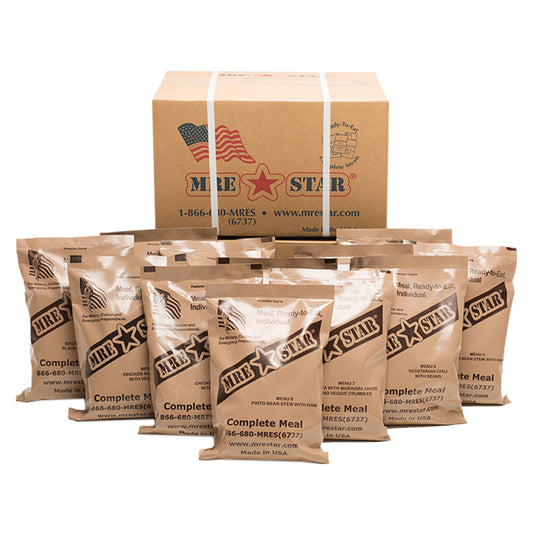Paracord For Survival
If you have been been keeping up with our blog posts, you may have realized that we have tons of articles about 'parcord' and the different uses for it. We are going to continue to add to that list with more ways that we can use paracord for emergency preparedness purposes that could end up helping when you need it most.
To recap, 'what is paracord'? Paracord, also known as parachute cord, is a soft, lightweight nylon rope that was originally used for parachuting. Typically, 550 paracord (which is the paracord used for our bracelets) is made of 32 strands of nylon sheath on the outside and seven strands of 2-ply nylon yarns on the inside (the “guts”). The 550 paracord is the same made for the government and has a minimum breaking strength of 550 lbs. Since the cord is quick-drying, rot- and mildew-resistant, it’s great for many purposes. Military units use it for securing packs, hanging covers and tents. Many military personnel even use the guts as fishing line.
Before you can know how to really use paracord during a survival situation, here are a few of the basics.
*Must Know Paracord Knots*
The Figure 8 Knot;
Tie an “8” in the paracord. To do this, make a loop over your anchor such as a tree, carabineer, or another piece of paracord. Then wrap the tail of the cord under the anchor then back through the first loop. Pull it tight.
To do this, make a loop over your anchor such as a tree, carabineer, or another piece of paracord. Then wrap the tail of the cord under the anchor then back through the first loop. Pull it tight.
The Clove Hitch Knot;
The clove hitch is the best knot to use when you are assembling a temporary shelter. A clove hitch is used to lash one pole or support to another. Typically, you will want to tie the clove hitch in the middle of the rope. This is because there will usually be tension applied to both ends of the rope. The clove hitch will hold firm and won’t slip or loosen quickly, although in high winds that are rocking the supports back and forth, you will have to tighten it occasionally.  After the bowline and sheet bend knots, the clove hitch is probably one of the most important to know in a survival situation. This is also the knot that is used by climbers to secure an anchor. Not only is the clove hitch simple to tie and untie, it’s also designed so that you can lengthen or shorten the trailing rope without untying it. The main drawback of the clove hitch knot is that it is not as strong as more advanced anchor knots. It can also loosen if it isn’t tightened securely after you tie it. Finally, the clove hitch is not as effective when you’re working with a wet or frozen rope.
After the bowline and sheet bend knots, the clove hitch is probably one of the most important to know in a survival situation. This is also the knot that is used by climbers to secure an anchor. Not only is the clove hitch simple to tie and untie, it’s also designed so that you can lengthen or shorten the trailing rope without untying it. The main drawback of the clove hitch knot is that it is not as strong as more advanced anchor knots. It can also loosen if it isn’t tightened securely after you tie it. Finally, the clove hitch is not as effective when you’re working with a wet or frozen rope.
The Bowline Knot;
 The bowline knot is essentially a combination of the applications of the square knot and the clove hitch. This is truly a multipurpose knot for camping. It can be used as a climbing knot, but because it’s a more advanced knot than the clove hitch, it will never slip when it’s properly tied, even if you have not fully tightened it. A bowline knot is perfect for hanging supplies out of the reach of scavenging animals, and it is also very useful in rescues, since it makes a loop that someone can grab onto or use as a foothold. Finally, a bowline knot is the best option for securing livestock and other animals, as it won’t tighten or slip on the animal’s neck
The bowline knot is essentially a combination of the applications of the square knot and the clove hitch. This is truly a multipurpose knot for camping. It can be used as a climbing knot, but because it’s a more advanced knot than the clove hitch, it will never slip when it’s properly tied, even if you have not fully tightened it. A bowline knot is perfect for hanging supplies out of the reach of scavenging animals, and it is also very useful in rescues, since it makes a loop that someone can grab onto or use as a foothold. Finally, a bowline knot is the best option for securing livestock and other animals, as it won’t tighten or slip on the animal’s neck
Paracord Belt for Survival
From a survival standpoint, a regular leather belt has a limited amount of uses, but consider how much you can do with a belt made of paracord.
Paracord Survival Lanyard
Lanyards are very popular among survivalists, backpackers, hikers and hunters for carrying whistles or duck calls around your neck. A good and strong paracord lanyard can hold anything you want to put around your neck.











